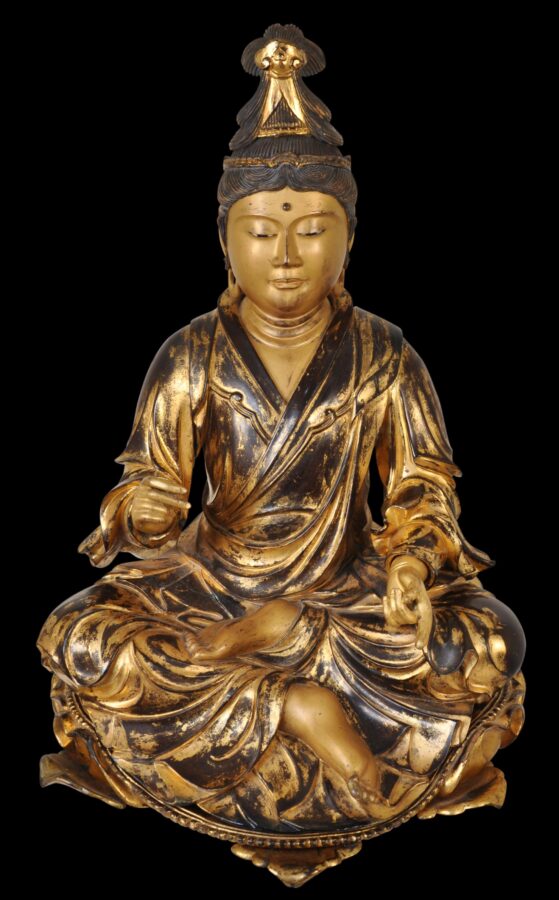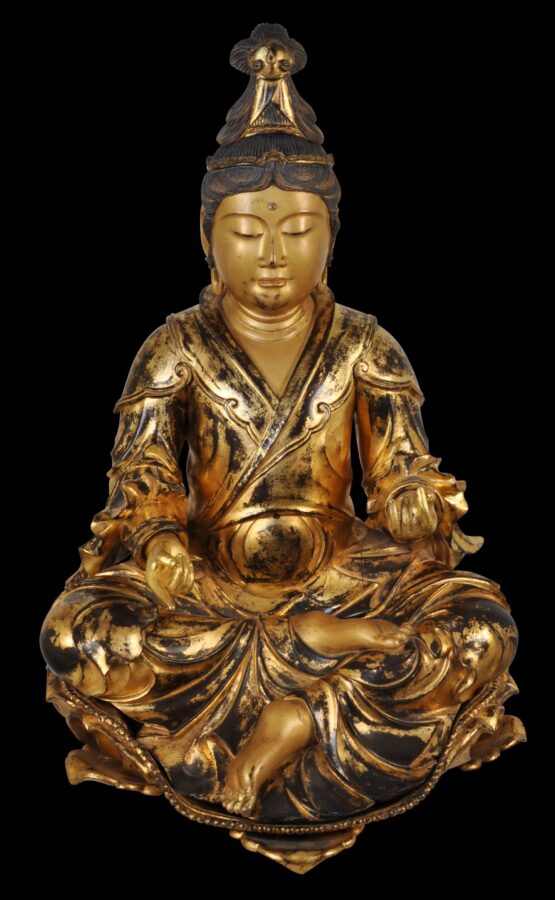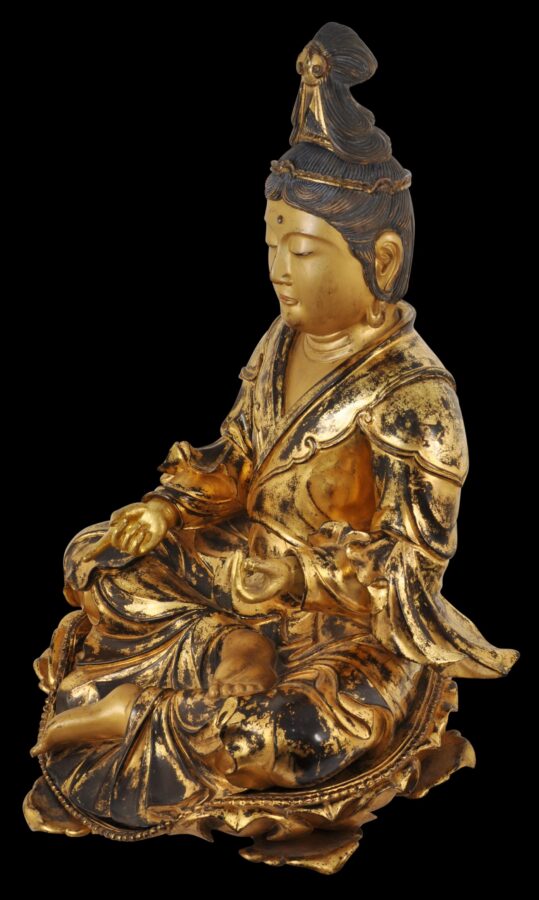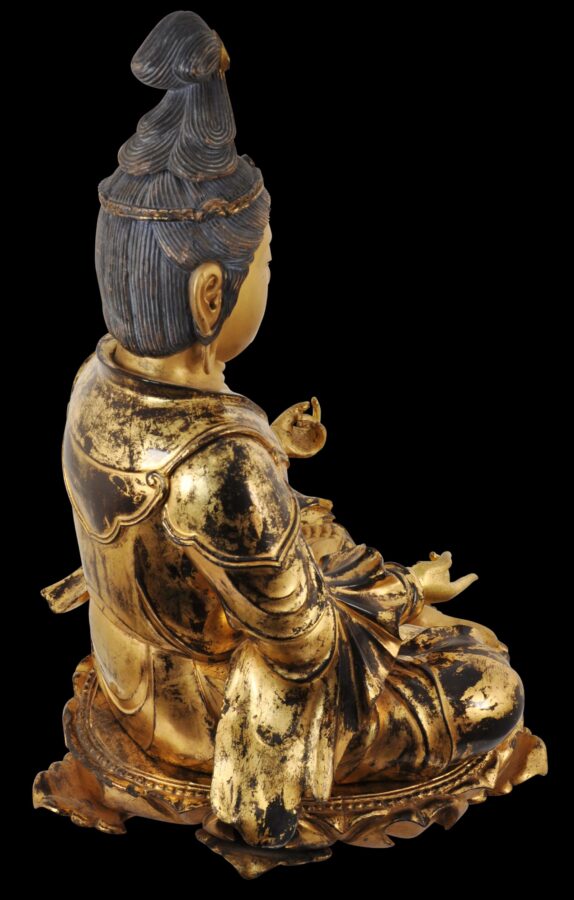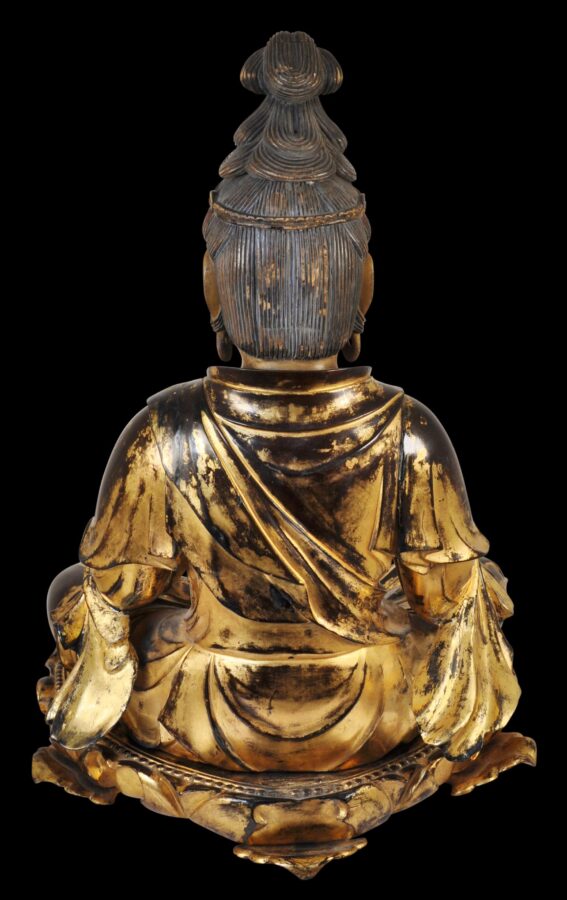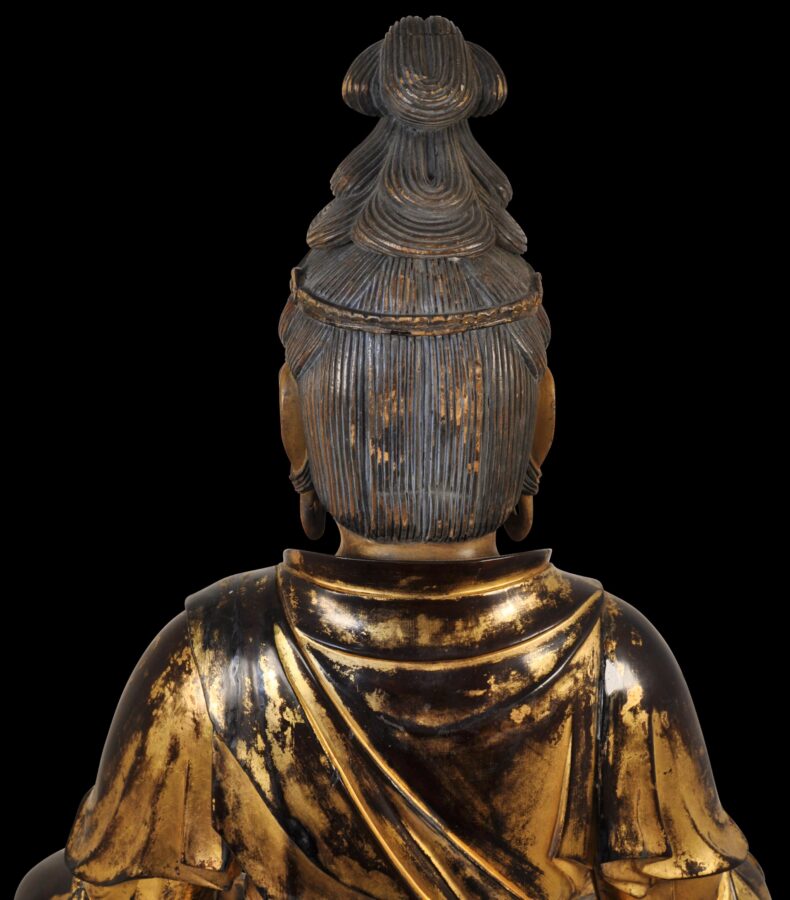This exceptional pair of gilded and lacquered Bodhisattva (Bosatsu in Japanese) figures dates to 18th-19th century Japan, though the styling is of the earlier Kamakura period. The modelling of each is exquisite: the faces, the hairstyles, the feet, and the luxuriant robes which have been carved and formed with much complexity and fluidity. (Bodhisattvas are enlightened beings who have delayed entering Nirvana, so that they may help others attain enlightenment.)
Each is shown seated, cross-legged on a lotus petal base. The underside of each image has been made separately and each fits perfectly on its own respective petal base, and not the other – so each base has been custom-made for each deity.
Each has been modelled with princely costumes and affectations suggestive of the Buddha’s princely origins.
The pair shows Tang Dynasty influence from China: each has a well-composed, compact body. The faces are fleshy and rounded, the chins are pulled in slightly, the eyebrows are presented as gentle arcs, the lips are well formed and thin, the nose ridges are straight and prominent, the backs are rounded, and the garments have plenty of folds and much symmetry.
The eyes of each are narrow, downcast, and inlaid with glass and possibly rock crystal, and there is a glass third eye on the forehead of each.
Their gazes exude wisdom and dignity.
The hair of each is beautifully delineated and gathered into high, elaborate topknots – a clear mark of earlier Chinese Tang, Sung and Yuan Dynasty styles that were copied from China in Japan.
Each wears full-length robes or skirting known as mo or kun.
Each has been carved from light wood – most probably Japanese cypress (hikoki) – using the wood-core dry lacquer technique that became widely used in Japan for religious sculpture, from the 8th century onwards. The technique known as Yosegi-zukuri involved first constructing the frame of the overall figure with a wooden frame, which was then carved. Next came a layering on top with a paste-like lacquer to build up the details such as the flesh and robes. Finally, a covering of black lacquer was used, and then the application of gold leaf to gild the image.
The underside of each is inscribed in Japanese giving the name of the commissioner Itoh Kyuemon. Most probably the pair was commissioned for donation to a shrine.
Each image is in excellent condition.
References
Ishii, A., Buddhist Statuary, 2nd ed., Shogakukan, 2019.
Kannon Museum: Illustrated Catalog, (Kamakura), 2015.
Mu-i: Special Issue Commemorating the National Treasure Designation of the 1001 Thousand Armed Kannon (Senju-Kannon) Images, Sanjusangen-do, 2018.
Numinous Minamiyamashiro: Treasures from the Mountains between Nara and Kyoto, Nara National Museum, 2023.
Tofuku-Ji: Monumental Zen Temple of Kyoto, Live Art Books, 2023.
Yoshihiro, S., Understanding Japanese Buddhist Sculpture through Visual Comparison, PIE International, 2019.



